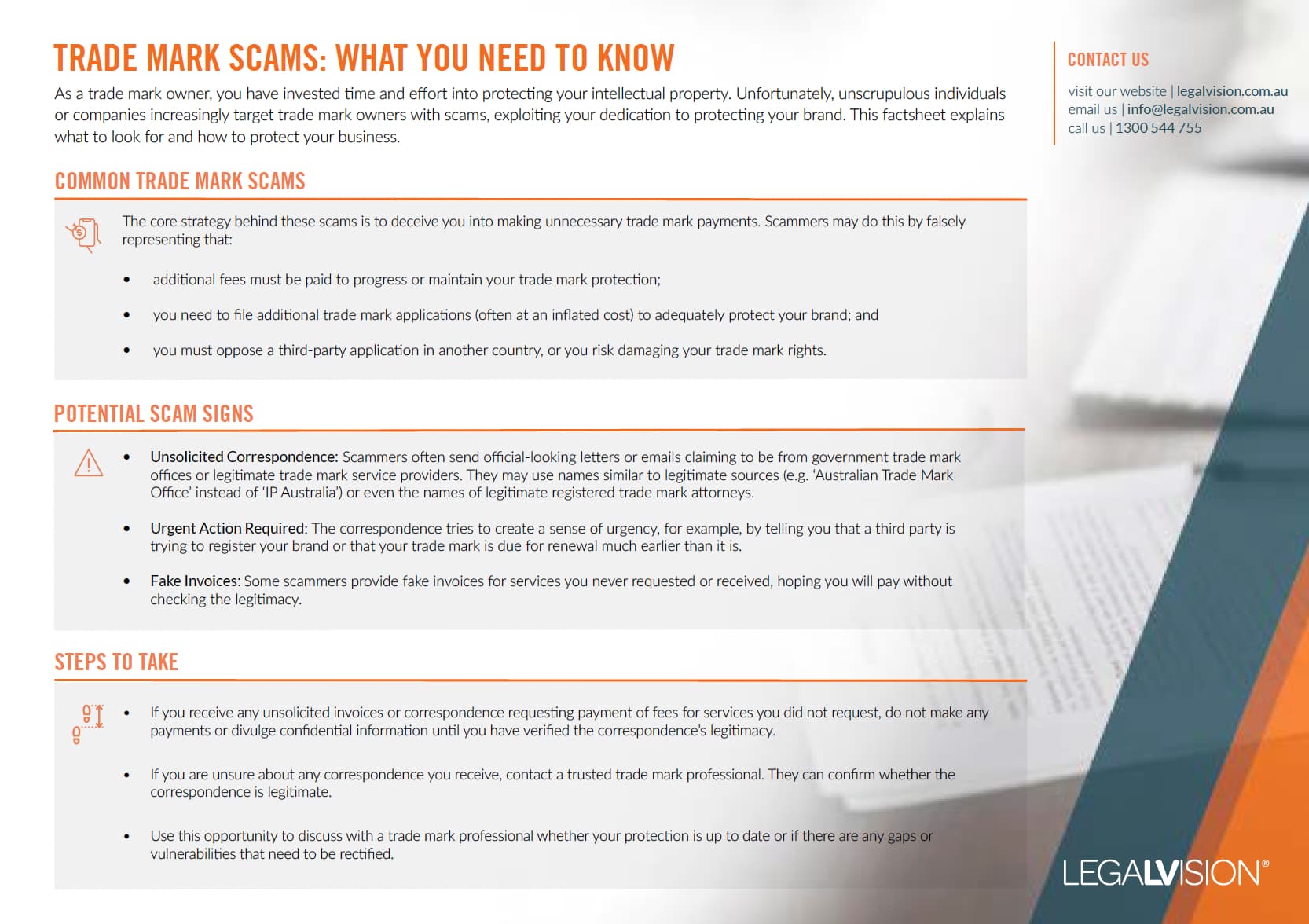In Short
-
Choose an invented, arbitrary, or suggestive word or logo that stands out and isn’t too descriptive.
-
Select classes that cover your current and future goods or services.
-
Do not include internal functions or vague terms; be specific while allowing room for growth.
Tips for Businesses
List the products and services you currently offer and those you plan to offer in the next few years. Use this list to help you choose the right trademark classes. Starting with a distinctive name and checking for existing marks early can save time and cost later.
Developing a strong, registrable trade mark is a critical step in protecting your brand. While the process can be challenging, it is essential to create a mark that is not only eligible for registration but also enforceable and valuable to your business. This article will explore how to improve your trade mark application by focusing on creating strong, distinctive trade marks that protect your brand effectively.
Strong Trade Marks
A high-quality trade mark should:
- deter others from using identical or similar trade marks;
- be easy and cost-effective to enforce; and
- increase the value of your business.
What Makes a Strong Trade Mark?
When developing your trade mark, consider the following categories of strong marks that may be more likely to be successfully registered and protected:
- Invented Words: These are made-up words with no meaning or connection prior to their creation, making them the strongest type of trade mark. They have the maximum deterrent effect and are typically the easiest to enforce. Famous examples include KODAK, EXXON, and XEROX.
- Arbitrary Marks: These use existing words unrelated to the goods or services they represent. Famous examples include APPLE for computers and smartphones, and DOVE for soap or chocolate.
- Suggestive Marks: These marks ‘suggest’ or hint at a quality or feature of a product or service without directly describing it. Examples include AIRBUS for aeroplanes or MICROSOFT for software.

This fact sheet explains what to look for and how to protect your business from trade mark scams.
Poor Quality Trade Marks
While creating your trade mark, be aware of these types of marks that are generally considered weak and may face challenges in both registration and enforcement:
- Descriptive or Generic Marks: These marks are often difficult to register and enforce because other traders may have a legitimate need to use these words in relation to their own goods or services. Examples include ‘QUALITY HOMES’ for house construction or ‘FAST COMPUTERS’ for a technology company.
- Complicated Graphical Marks: Trade marks that contain many visual elements, while registrable, may not be valuable. Examples include an entire label or package design, or a complicated map or diagram. These marks may have limitedno deterrent effect against use of particular elements contained within them.
- Long Slogans or Phrases: The longer a phrase, the narrower the range of protection it will be afforded, and the lower the value of the registration. As with complicated graphical trade marks, a competitor using only some parts of a lengthy slogan may not be infringing the entire slogan, making it difficult to enforce.
Tips for Improving Your Trade Mark Application
- Be Creative: Invent a new word or choose words unrelated to the goods and services provided by your business.
- Keep it Simple: Keep slogans short, catchy and distinctive.
- Identify Key Elements: If you have complex branding designs, focus on the most distinctive features, and ask “how will my customers identify my products?”.
- Avoid Confusion: Conduct searches to ensure your mark is not similar to any existing trade marks.
- Be Distinctive: Do not choose marks that merely describe your goods or services.
Key Takeaways
Creating a strong, distinctive trade mark is crucial for protecting your brand. When developing your mark, aim for invented words, arbitrary marks, or suggestive marks, as these are generally stronger and easier to protect. It’s best to avoid descriptive or generic marks, complicated graphical elements, and long slogans. Remember, a well-chosen trade mark can become one of your business’s most valuable assets, serving as both legal protection and a powerful marketing tool.
If you need assistance registering a trade mark, contact our experienced trade mark lawyers as part of our LegalVision membership. For a low monthly fee, you will have unlimited access to lawyers to answer your questions and draft and review your documents. Call us today on 1300 544 755 or visit our membership page.
Frequently Asked Questions
A distinctive trade mark is one that clearly identifies the source of goods or services. Invented words, arbitrary marks, and suggestive marks are considered distinctive. For example, KODAK for cameras is distinctive because it’s an invented word unrelated to photography.
While it is possible to use common words, they often make for weaker trade marks. Common or descriptive words are harder to register and protect because other businesses may need to use them. It’s usually better to choose distinctive or arbitrary words unrelated to your products or services, or to combine common words in unique ways to create a stronger mark.
We appreciate your feedback – your submission has been successfully received.











